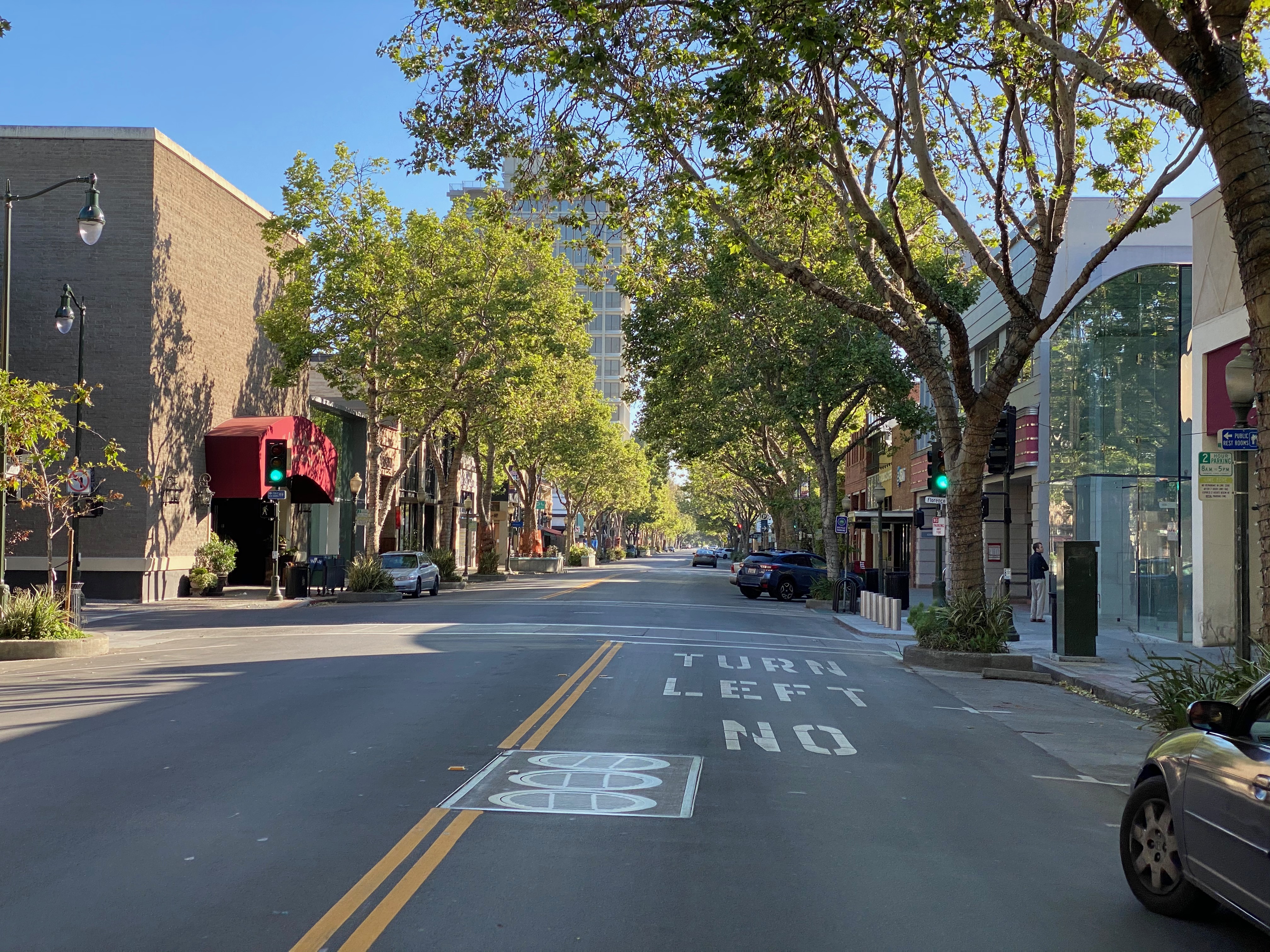The COVID-19 pandemic struck Palo Alto businesses with force, with restaurants losing up to 60% of their revenue due in large part to Stanford’s reduced on-campus population. Now, just over a month away from frosh, sophomores and first-year transfers returning to campus, local businesses are preparing for an influx of customers while also bracing for a rise in COVID-19 case counts.
Santa Clara County issued its first “shelter-in-place” order on March 16, just days after Stanford canceled in-person classes for the spring quarter. In the months that followed, many restaurants dealt with sharp financial losses from the decreased foot traffic. Though restaurants found ways to recoup lost business over the summer, Stanford’s cancellation of an on-campus fall quarter for most students, combined with recent regional stay-at-home orders, have curtailed a potential financial recovery.
During the fall quarter, Stanford’s on-campus student population fell to around 5,900 students, negatively impacting Palo Alto businesses, Palo Alto Mayor Adrian Fine said.
“It really affects us, and the areas of Stanford that are in city limits are huge generators of economic activity,” Fine said. “Without the students, I think a lot of local businesses have certainly suffered. Personally, I look forward to the students coming back because, one, they support our economy, but two, they also bring a little bit of life and excitement to our town.”
The University expects that the on-campus student population will increase to approximately 10,000 for the winter quarter.
Judy Vasa, owner of Siam Royal Authentic Thai, estimated that the University usually accounts for about 30% of the restaurant’s revenue. The loss of students has forced her to dip into her retirement savings to pay her restaurant’s rent. She’s hoping to make rent once the students come back.
“Rent on University Avenue is really high,” Vasa said. “My landlord doesn’t give me a break, but there’s nothing we can do because we are still on the lease.”
Though she predicted that business would improve when students return, Vasa said she’s worried about a potential rise in cases. “We’re a family run business here, and we’re pretty old,” she said
Galen Fletcher, owner of Sundance the Steakhouse in Palo Alto, said that the lack of visiting professors, parents weekend and football games has accounted for a 20-25% drop in the restaurant’s revenue.
“We really love taking care of Stanford, and they take care of us big time,” Fletcher said. “Not to have that connection is upsetting.”
Fletcher said he is optimistic about Stanford’s winter quarter plans. As long as everyone is “washing their hands, taking care of themselves and not venturing out when they don’t feel good,” Fletcher said, he has “no issues whatsoever” with the University’s plan.
Some restaurant owners said that the influx of potential customers could provide a much-needed boost for their businesses.
“Right now we have nothing,” said Apisit Kinsumrong, Lotus Thai Bistro owner. “But I think the restaurant is going to be okay if the students return to study.”
One employee at T4 who asked to remain anonymous due to privacy concerns told The Daily that the cafe has been “like a ghost town” since the University’s closure. While she’s looking forward to things getting back to normal, she said she is more worried than not about Stanford’s plans.
“A lot of people subconsciously don’t realize that they’re not social distancing, so it’s kind of worrisome for other students that do have medical conditions,” she said.
In order to facilitate community preparedness, Stanford participates in the Palo Alto/Stanford Citizen Corps Council, which meets twice a month with individuals, businesses and organizations to discuss solutions.
Associate Vice President for Community Engagement Megan Fogarty told The Daily that the University will work to uphold health standards while also supporting the surrounding community.
“Stanford faculty, staff, students and postdocs have lent their expertise and time to assisting our neighbors during this challenging period, and the University is committed to supporting ongoing regional recovery efforts,” Fogarty said.
Restaurants in Santa Clara County are also dealing with more stringent restrictions on dining. On Dec. 4, Santa Clara and five other Bay Area jurisdictions announced stay-at-home orders that prohibit restaurants from offering indoor or outdoor dining, acting ahead of the California regional stay-at-home order triggered by intensive-care-unit capacity.
The order, which took effect on Dec. 6 and will last through Jan. 4, is the first to prohibit outdoor dining since July. Now some establishments must weigh whether to shut down operations or rely entirely on takeout and delivery.
Fletcher said loss of outdoor dining seemed too restrictive. He added that the restaurant industry operates on “super thin margins,” even under ideal circumstances. “There’s just not enough money at the end of the day to pay all the hard costs,” he said.
When Sundance first started using a heated tent for outdoor dining, Fletcher was able to hire around 20 employees. The restaurant is now back in “survival mode” following the new restrictions, and at least half of the current staff was laid off at the beginning of December. Fletcher is optimistic that the return to campus will help alleviate some of the financial pressure on his business as long as students take appropriate health precautions.
“We feel very confident that we can achieve safety and sanitation at any level that we’re given, and we definitely welcome Stanford students and Stanford faculty to take out with us,” Fletcher said.
Contact Tammer Bagdasarian at tbag ‘at’ stanford.edu and Benjamin Zaidel at bzaidel ‘at’ stanford.edu
